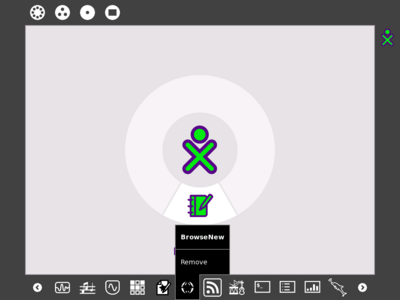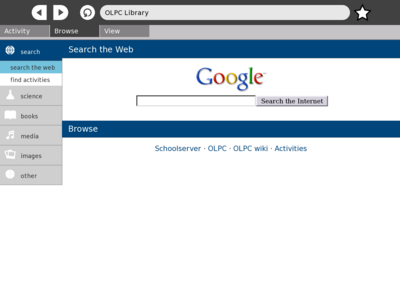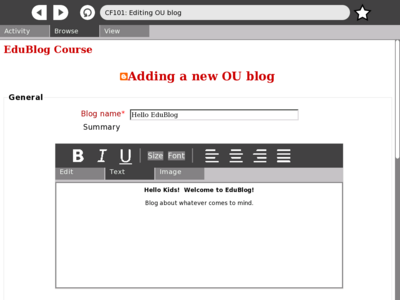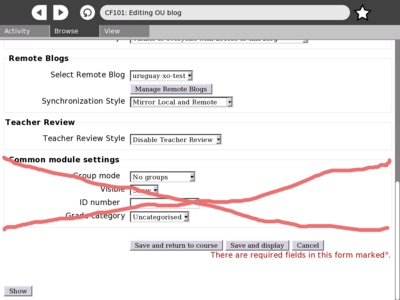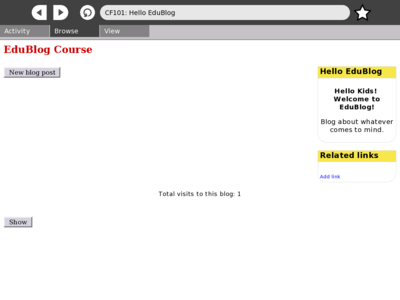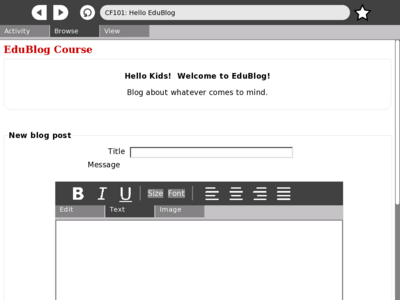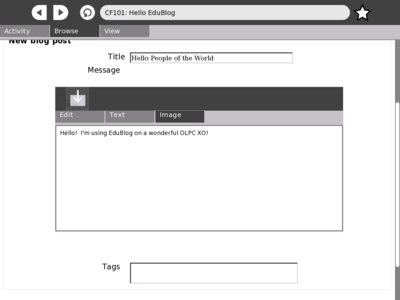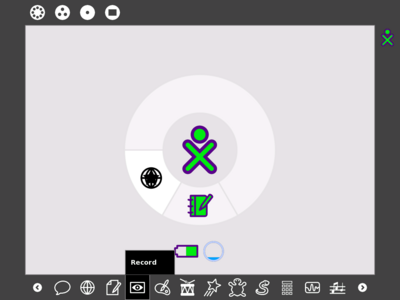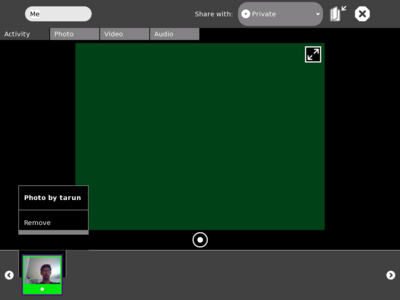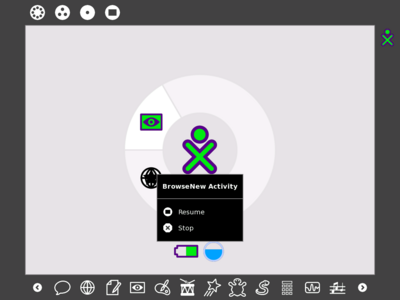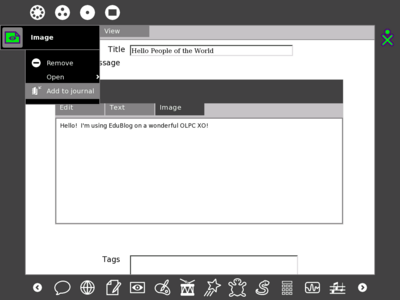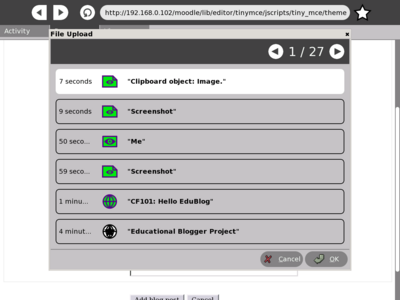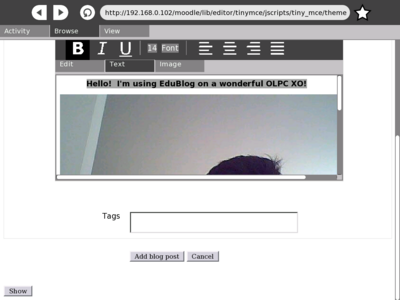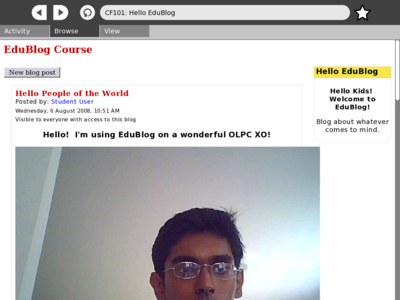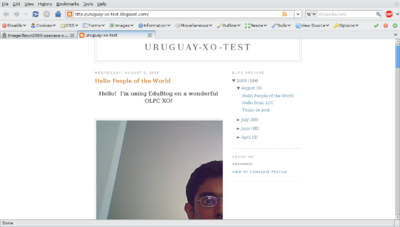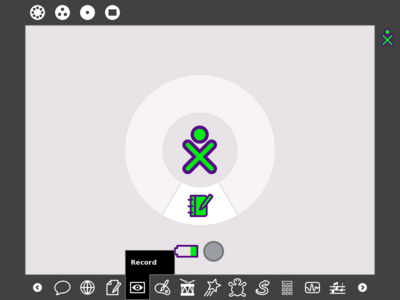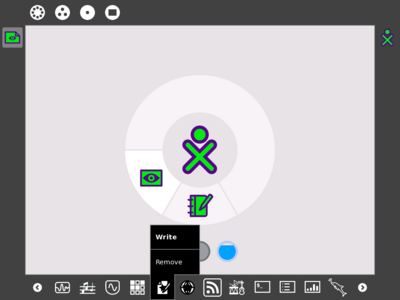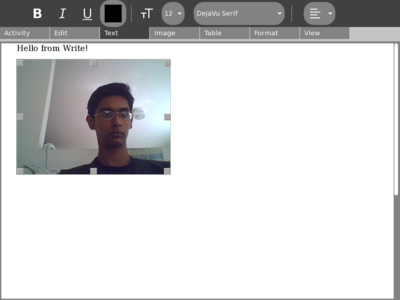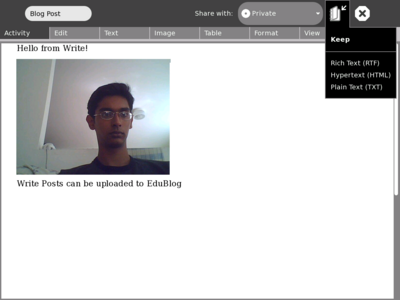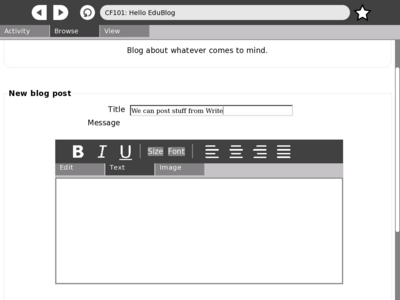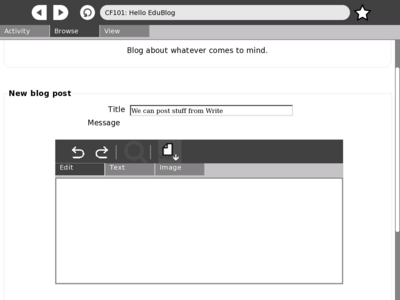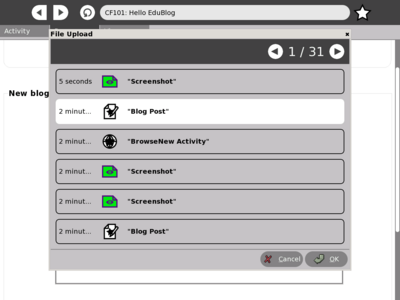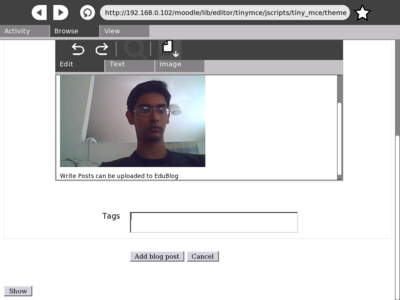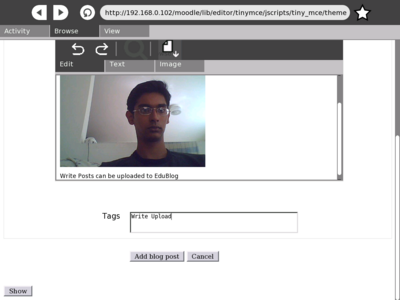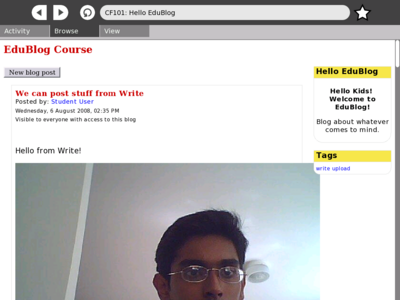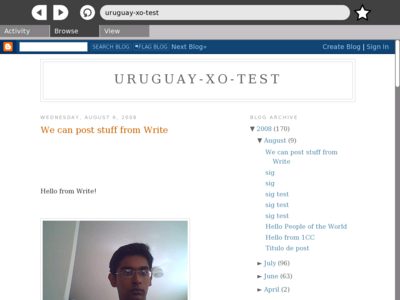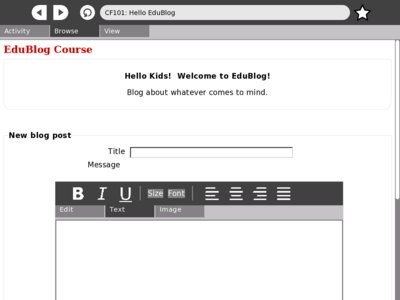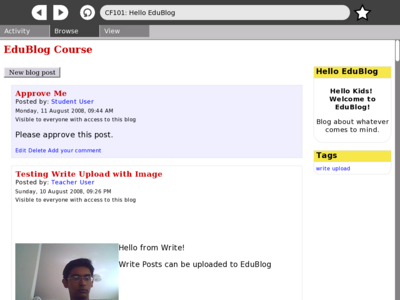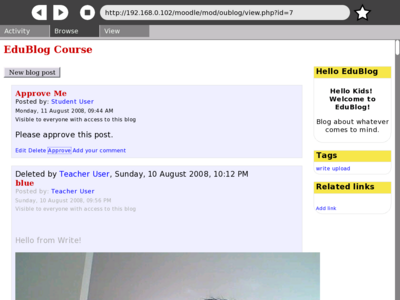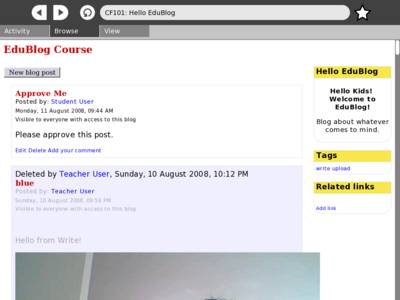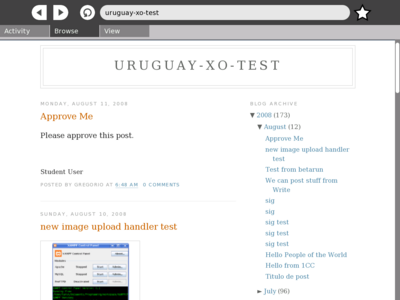EduBlog Instructions
This page is to guide beta testers through the EduBlog features that need testing and will hopefully eventually be improved into being a decent guide. Please try out the workflows in the use cases.
For Those With Build 656
Those using build 656 (not 656 update 1) will need to install a patched version of Browse and Write in order to insert images or upload from Write. These patched versions are BrowseNew and WriteNew and will install along side the existing Browse and Write activities on the XO. The icons are black and have a star on top of the standard sugar icon. Do not try these patches unless you are absolutely sure you are using build 656 prior to update 1. It is also recommended that those using build 656 eventually upgrade their builds and use the newer versions of the activities which have been fixed.
Pages for Testing
If you'd like an account to test the system, please contact Tarun.
For Teachers (username: teacher or teacheres):
- Create New Blog
- View/Manage Blog - (already created for demo)
- Remote "Linked" Blog
For Students (username: student or studentes):
- List of Blogs
- View Blog - (blog already created for demo)
- New Blog Post - (blog already created for demo)
- Remote "Linked" Blog
Use Cases
The following use cases demonstrate EduBlog's basic features. All images are actual screenshots taking on an XO-1 with Build 656 running BrowseNew and WriteNew. It is assumed that the admin or teacher has already entered the settings for EduBlog to connect to the remote blogs. Moodle EduBlog, commit from August 6, 2008, was locally run on Ubuntu with LAMPP and AbiWord 2.6.0 since the main server was down. Some screenshots were edited to make this guide easier to follow.
Teacher Creates a New Blog
Student Posts to Blog with an Image using Browse and Record
The teacher configured this blog to post to uruguay-xo-test with the settings "Mirror Local and Remote" and "Disable Teacher Review".
Student Posts to Blog with an Image using Write Upload
The teacher configured this blog to post to uruguay-xo-test with the settings "Mirror Local and Remote" and "Disable Teacher Review".
Student Sends Post to Teacher for Approval
The following screenshots are from the August 10, 2008 commit. The teacher has selected "Require Teacher Approval" as the Teacher Approval setting.
Teacher Approves Posts
EduBlog Settings
New Blog Settings Explained
- Blog Name: Local name of the blog
- Summary: The description of the blog assignment that appears when students try to create a blog post
- Allow Comments: Whether students and teachers can comment on the blog posts
- Maximum Visibility: Determines who can see the local blog
- Remote Blog Type: Determines which external blog (ie Blogger.com) to link to; "Local Only" means not to link to any other blog
- Name: The name of your Blogger.com blog
- Username: Your google username
- Password: Your google password
- Synchronization Style: Determines how this blog links to the external blog; "Require Teacher Publishing" means that the ONLY way a post goes to the external blog is if a teacher or admin logs in visits the view page and clicks the publish option for that post; Mirror Local and Remote means that any posts that are visible to students in the local blog are automatically also published to the remote blog
- Teacher Review Style: Determines whether and how to use teacher review; "Disable Teacher Review" forces all posts to directly go to the blog; "Allow Teacher Review" gives students the option to send to teacher for approval or directly send to the blog; "Require Teacher Review" forces students to send to the teacher for approval before the post appears to other students; The post being published to the external blog depends on the "Synchronization Style" setting
Posting to a Blog Explained
- Title: The title of the blog post
- Message: The contents of the blog post (the editor mimic's Write, so hopefully no doc needed?)
- Tags: Words or short phrases describing the post's content
- Send To: Indicates whether to send to teacher or directly to the blog; The visible options depend on how the teacher configures the blog
Managing a Blog
- Edit: Allows the blog post to be edited
- Delete: Deletes the blog post
- Publish: Sends the post to the remote blog (shows if Synchronization Style is set to "Require Teacher Publishing")
- Approve: Allows teachers to approve posts that used the send to teacher (shows if "Disable Teacher Review" is not selected)
- Add Your Comment: Allows for commenting on post
